Kansas City Monarchs and the Major Leagues: Three years ago, my annual Martin Luther King message highlighted the Negro Leagues Baseball Museum and the role played by Bill Veeck in the integration of baseball. As noted then, the roster of the Kansas City Monarchs produced not only Jackie Robinson (Brooklyn, 1947), but also the first blacks to play for six other of the then-existing 16 teams. One of those was catcher Elston Howard who played for the Monarchs from 1948 to 1950. He went from the Monarchs to the Yankee farm system (including 1953 with the Kansas City Blues ) and was then promoted to the Yankee roster in 1955. This takes us to the story of Vic Power.
Vic Power and the Kansas City A’s: When the Kansas City A’s played their first game in KC in April of 1955, I went to opening day with my 8th grade pal Jasper DeSimone. One of the players on that A’s team was already well known to us – Vic Power, a first basemen with a good glove and good bat. Power had played for the Kansas City Blues in 1952 and 1953, hitting a league-leading .349 in 1953. This appeared to put him in line to move up to the Yankees for 1954, but Yankee general manager George Weiss said he was waiting for a black player that met the “high Yankee standards.” Power did not qualify and was traded to Philadelphia where he played the 1954 season, then moved with them to KC for 1955. A few years earlier, Weiss also famously passed on Willie Mays who led the Giants to a World Series sweep in 1954.
Yankee standards? Power was known to date white women and drove a Cadillac. He was considered to be a “showboat” at first base. And he was outspoken, a code word for not knowing his place. All of these had a ring of truth as recounted by David Maraniss in his biography on Roberto Clemente. Clemente and Power were friends in their native Puerto Rico, and the older Power in many ways paved the way for Clemente when he came to the states. They had been raised in a relatively color-blind society where segregation was not the norm and mixed-race dating was not uncommon. During their tenure in the major leagues, they were constantly met with treatment as second-class citizens – both by the public and the baseball establishment. Power often tried to address this with humor, and Maraniss tells the oft-told story of a restaurant waitress telling Power that they did not serve Negroes. Power replied “That’s okay, I don’t eat Negroes. I just want some rice and beans.” The story may be apocryphal, but it is in character.
As for fielding, Power played far from the bag, always got back in time for a throw and snatched the ball into his glove with a one-handed snap. Most first basemen fielded and caught the ball with two hands, hence the claim that Power was showboating. But it gave Power far greater range on the infield plus gave him a few extra inches when stretching for a throw on a close play. The verdict on this? Power won a Gold Glove seven straight years and all first basemen now catch one-handed. Such showboats. As Power liked to say, “The guys who invented the game, if they wanted you to catch with two hands, they would have given you two gloves.”
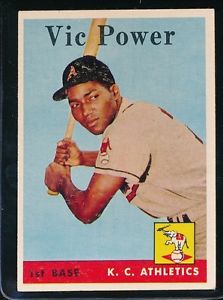
As for George Weiss and the Yankees, they finally bowed to the pressure in 1955 when Elston Howard joined the team and presumably had acceptable dating habits. To the Yankees “credit,”, they beat Tom Yawkey and the Red Sox who waited until 1959 to have a black player (Pumpsie Green). To put this in perspective, Jackie Robinson’s Hall of Fame career began and had ended (1947-56) before Yawkey gave in. After that first signing, there was little change in attitude by ownership and some pundits have said that the problem with Boston had not been the curse of the Bambino (the sale of Ruth in 1920), but the club’s recalcitrance to embrace diversity in their lineup. John Henry bought the team in 2002 after it had been in the Yawkey family since 1933. In the 14 seasons that Henry has owned the team, the Red Sox have won the World Series three times. In the 69 years owned by the Yawkey family? Zero World Series. A recent example of the current approach: last month, Boston signed black superstar pitcher David Price for $217 million.
Just like Weiss and the Yankees, Yawkey’s team vetoed a tryout for Willie Mays. In later years, Mays remained bitter about the slight and would often tell Boston great Ted Williams, “We should have played together.” What an outfield that would have been. When Williams was inducted into the Hall of Fame in 1966, he surprised everyone (including Yawkey in the audience) with an eloquent plea to add players from the Negro Leagues to the Hall of Fame. In his speech, Ted thanked the Hall and Yawkey, but then went on to say “Bud I’d not be leveling if I left it at that,” and then after praising the hard work of great players and urging Willie Mays to pass him on the homer list, “Baseball gives every American boy a chance to excel. Not just to be as good as someone else, but to be better. This is the nature of man and the name of the game. I hope that one day Satchel Paige and Josh Gibson will be voted into the Hall of Fame as symbols of the great Negro players who are not here only because they weren’t given the chance.”
Monte Irvin: Outfielder Monte Irvin died earlier this week at age 96. His prime years were in the Negro Leagues, and he was one of the beneficiaries of that Ted Williams speech. Irvin was inducted into the Hall of Fame in 1973. He also got in a few major league seasons with the New York Giants, joining them as a 30-year old “rookie” in 1949 on the same day as Hank Thompson, making them the first black players for the Giants. Thompson was a former KC Monarchs star who was also the first black to play for the St. Louis Browns in the AL (1947). Irvin served as a mentor to Willie Mays when Mays joined the Giants in 1951, and this week the 84-year old Mays spoke about his friend on NPR (worth a listen, 4 minutes (click here). Joe Posnanski wrote about Mays, Irvin and Buck O’Neil in this fine tribute to Irvin.
I have known about Monte Irvin since I was 10 years old. In 1951, as a baseball crazy kid, I was caught up in the excitement when the Giants came from far back in the pack to tie the Dodgers for the NL pennant. This meant a 3-game playoff series that came down to the ninth inning of the third game when Bobby Thomson hit the 3-run walk-off home run known in baseball lore as “The Shot Heard ‘Round the World.” The names of the Giants players have stayed with me – Stanky, Dark, Irvin, Lockman, Maglie, etc. – and I even remember that Don Mueller broke his ankle sliding into third on the play prior to Thomson’s homer. The Dodgers too, the “Boys of Summer” in the Roger Kahn classic: Jackie, Duke, Furillo, Pee Wee, Roy, Don, Hodges, etc. Why do I remember? In the winter of 1951, I bought a comic book that covered the Giants race for the pennant. I probably read it 50 times. Sure wish I still had it.
In the 1951 Subway World Series, the Giants lost to the Yankees, but they made history with an all-black outfield of Irvin, Mays and Hank Thompson. Irvin was superb, hitting .458 and stealing home against Yogi Berra (photo below). Irvin was still with the Giants in 1954 when the Giants swept the World Series against the Indians and Willie Mays made “The Catch” (see Griffey below).
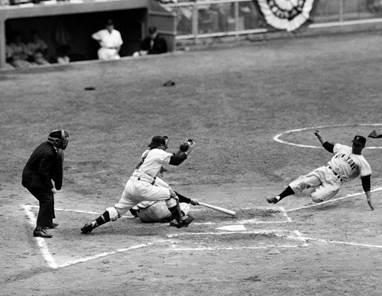
Alex Gordon: Good news of course. With so much in the media on the Royals resigning Gordon, I will limit my comments to a couple of fun tweets (here and here).
Thank you Alex.
Hall of Fame – Griffey: Ken Griffey, Jr., one of the best ever, was just voted into the Hall of Fame with the highest percentage of votes in history: 99.3% (437 votes out of 440). An internet pundit has identified the three sportswriters who did not vote for Griffey:
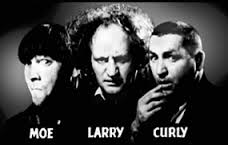
The lack of a unanimous vote is really no surprise. There have always been some holdouts, and the story goes all the way back to the inaugural class of 1936 when Cobb and Ruth did not get 100%. This has led to an unwritten rule that no one should be unanimous. Some other players and the number of votes they did not get when voted in: Bob Feller (10), Hank Aaron (9), Willie Mays (23), Ted Williams (20), Mickey Mantle (43) and George Brett (9).
Griffey was born in Donora, PA, on November 21, 1969, prompting Joe Posnanski to post this trivia question: “Who is the greatest left-handed outfielder born in Donora, PA on November 21?” The other candidate is Stan Musial, born in Donora on November 21, 1920.
This clip in the media coverage caught my eye: Griffey in his Mariners uniform #24 making a stunning over-the-shoulder catch. Remember this clip that I ran about another #24 in the inaugural Hot Stove post? Mays in 1954 and Griffey in 1990. As Yogi would say, déjà vu all over again.
Griffey’s father, Ken Griffey, Sr., played for Cincinnati’s Big Red Machine in the 70’s, and his long career ended with two seasons in Seattle where he played with his son. On September 14, 1990, they made baseball history by hitting back-to-back home runs. Junior later played nine seasons with his dad’s former team in Cincinnati.
Hall of Fame – Piazza: Dodgers/Mets catcher Mike Piazza joined Griffey in this year’s class by getting 83% of the vote. But the percentage differential is not his biggest spread from Griffey. In the baseball draft of 1987, Griffey was the first overall pick (and the first such pick to enter the HOF). Piazza was drafted by the Dodgers in the 62nd round in 1988, the 1,390th player selected in that draft and easily the lowest spot for a Hall of Famer. Piazza was drafted as a favor to Dodger manager Tommy Lasorda, a family friend. The modern draft was started in 1965 and now has 40 rounds.
Piazza was selected in his 4th year of eligibility, but his stats might have justified a quicker entrance to the Hall. He suffered from whispers about potential steroid use, although he never tested positive and was not identified in any of the investigations. Steroids still play a big role in the voting as two of the biggest star remain at less than 50% of the necessary 75%. In an article by Joe Posnanski written before this year’s vote, he makes a persuasive argument of why Barry Bonds and Roger Clemens belong in the Hall (scroll to the end of the article for #1 and #2). The issue is the “character” requirement that voters consider for election to the Hall. Alleged steroid users and gambler Pete Rose have so far not met the character test. George Weiss and Tom Yawkey have and are in the Hall.
Hall of Fame – Sweeney: Long-time Royal Mike Sweeney became eligible for the HOF ballot this year and received three votes. Maybe the three votes that Griffey did not get. Well, probably not related. Mike was a great guy and a solid player for the Royals, but his Hall of Fame membership is properly enshrined behind the left field bleachers at the K – he was inducted into the Royals Hall of Fame in 2015.
Stan Musial: In the last Hot Stove post, I included a nostalgic piece from Talis Bergmanis on his childhood days at old Busch Stadium when he saw the “man from Donora, PA” deposit many home runs on the right field Pavilion. This prompted a response from my St. Louis law partner Joe Porter: “I saw Stan bat in 1958 and he hit one onto the Pavilion roof in right field for a home run. I was 5 years old and from that day forward, although right handed, I hit from the left side!” Must have worked okay as Joe went on to play high school, Legion and semi-pro ball. He almost had tryouts with the Reds and Twins, but a low draft number intervened.
Another Musial connection has been in the news. Enos Stanley Kroenke is the billionaire developer who owns the NFL Rams who this week were granted the right to move from St. Louis to LA, reversing the move made in 1995. Kroenke is named after Cardinal greats Enos Slaughter and Stan Musial, revered names in St. Louis. Kroenke is being called names today in St. Louis, but not Enos or Stan.
Coming posts from the Hot Stove: The Royals lineup after free agency moves; WAR, “what is it good for” and how it made Ben Zobrist rich; continuing discussion by Ian and grandpa Lonnie on all-time greatest players – next up, third base (Schmidt, Brett, Boggs?); Spring Training (Rita and I will be in Surprise in late March); my (lost) Mickey Mantle card from 1953; etc.
Royals/Chiefs: Houston, you have a problem. With Kansas City. The Royals over the Astros in the ALDS and the Chiefs over the Texans in last Saturday’s AFC Wild Card game. The Rockets of the NBA are safe (they do not play KU).
As soon as Knile Davis ran back the opening kickoff against the Texans, Rita said it was the Chiefs’ version of Escobar’s lead-off inside-the-park home run in the first game of the World Series. Check out the Davis dash in Spanish: pic.twitter.com/RPbIyHMX7v.
Since the last game that each team played in October, both teams continue with perfect records: Royals (2-0 for 10/31 and 11/1) and Chiefs (11-0). May the Chiefs go to 12-0 tomorrow with a Hosmer-like performance:
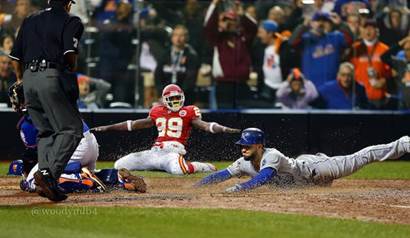
I am rooting for bookend Super Bowls: Green Bay and Kansas City in Super Bowls #I and #50. Different result this time please. In these days of constant TV, replay, streaming, etc., it is hard to believe that there was not a complete video of the first game in 1967. Some of the footage was either lost or taped over. The NFL Network has collected the 145 plays from various sources and edited and color-corrected them to recreate a video of the full game. It has been combined with the audio of the NBC radio broadcast and will be shown at 7:00 tonight on NFL Network (“Super Bowl I: The Lost Game”).
The NFL decided to go to Arabic numerals for #50, a break in the Roman numeral style – “Super Bowl L” just did not sound right for a golden anniversary. The first Roman numeral game was V, and the prior four retroactively became I-IV. Homework for all of you: In what year will they play Super Bowl LXXXVII (or would that be XXCVII)?
Leading me to some World Series trivia: We just witnessed the 101st World Series, but there have been 103 seasons since the first one in 1903. Missing in action: 1904 when the New York Giants of the NL refused to play Boston of the AL, and 1994 because of a labor dispute.
How far will the Chiefs go this year? An optimistic fan posted this photo-shopped prediction:
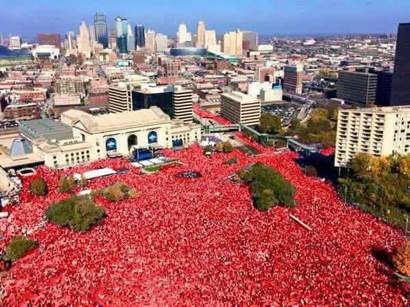
Go Chiefs!